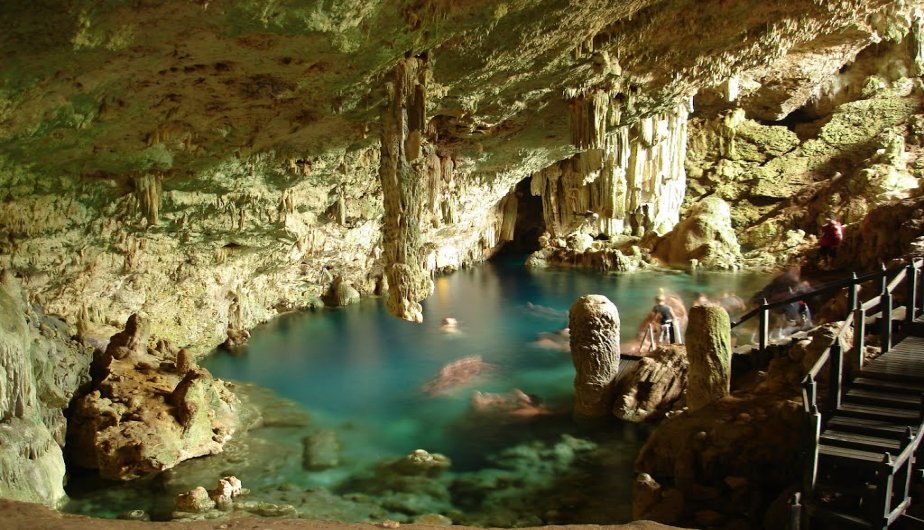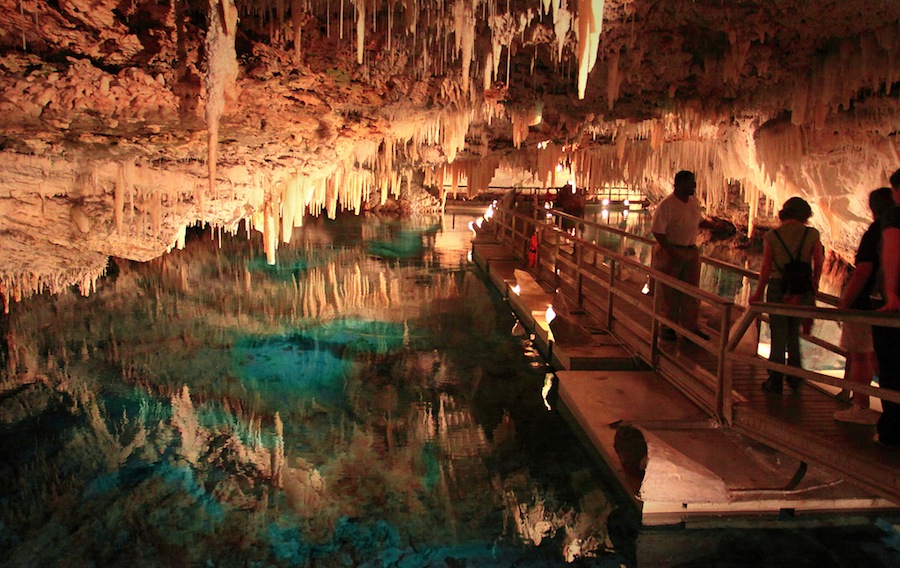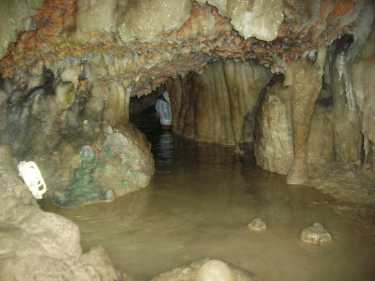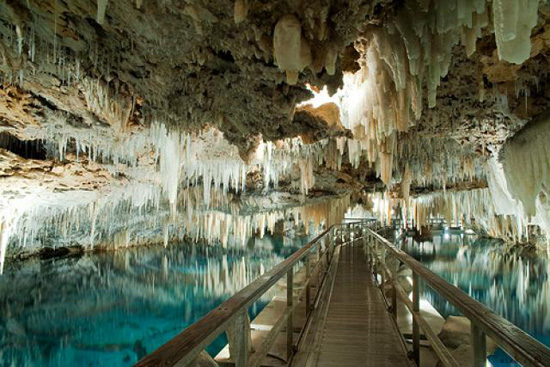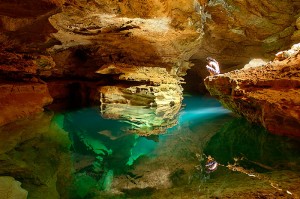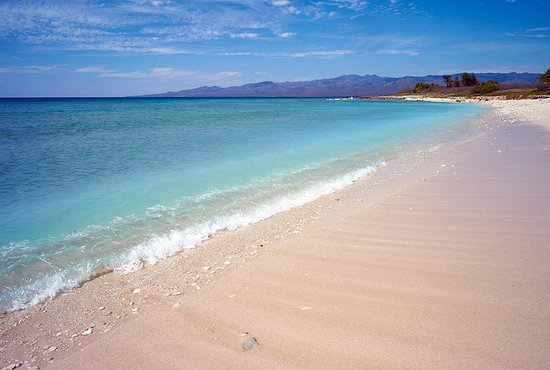Las Cuevas de Bellamar is the oldest tourist center in Cuba, which remains active. It is a series of caverns full of natural charms, which attract the curiosity and interest of fans of speleology and anyone.
Samuel Hazard, cartoonist and North American artist expressed: “Who has not seen the Bellamar Caves, has not seen Cuba”.
What is known as the Bellamar Caves, is really a single cave with several ramifications or galleries and halls, which total more than 24 kilometers in length, distributed in 9 levels.
The Bellamar Caves are located on the north coast of Cuba, about five kilometers from the center of the city of Matanzas. Already inside the beautiful caves the visitor can appreciate the effect of time on its beautiful stalactites, stalagmites and other formations.
The galleries and passages of these caves began to form about 30 million years ago. Originally, the plain in which the caves are located was under the sea, it was part of the bay of Matanzas. Throughout the so-called Bellamar Fault, the underground water, in combination with the carbon dioxide, was dissolving the calcareous rock and in this way creating underground chambers in the subsoil; under the bottom of the sea. While these caverns remained below sea level they were full of water. Then, to tectonic consequences (movements in the terrestrial layers), this area rose; forming the marine terraces that are noticed in the lands in the city of Matanzas and its surroundings.
Something very interesting about the Bellamar Caves is that there are also crystalline formations that look transparent and shiny. These formations do not originate in the same way as the stalactites and other structures mentioned. These crystals have their origin in geodes filled with water. Even more interesting is that in certain cavities of the caves the sedimentary formations are covered by a crystalline layer. This indicates that after drying, these chambers were flooded completely, or at least partially. These caves present an unusual beauty in the world of the caves since many of the formations are resplendent due to the crystalline layer that covers them.
The entrance to the Bellamar Caves is through the cavity called the Gothic Hall. It is a square-shaped camera and measures about 80 meters long by about 25 meters wide. In this room some of the formations have been named; among others is El Huerto de las Carrots, The Chapel of the Twelve Apostles, Doña Mamerta and perhaps the most famous is the Manto de Colón. But the Bellamar Caves are not just this room, the cavity extends to the east and west achieving a length that exceeds three kilometers long; and it is estimated that it is much bigger and with cameras still totally flooded. There is also at least one other cavity almost parallel to the north. Other cavities include the Gallery of the Two Lakes, the Hall of Sponges, the Gallery of the Dwarves and the Gallery of the Megalocnus east of the Gothic Hall. In the other direction are the Hatuey passageway, the Ladies’ Hall, the Las Dalias Lake and the Baño de la Americana.
These caves were discovered by chance. In February 1861 a slave lost his bar when he opened a hole in the ground trying to remove a lime rock. Apparently the slave, and even the foreman, imagined that the earth had swallowed the bar because that caused fright. Don Manuel Santos Parga, the owner of the farm where the quarry of these rocks was located, which were taken to a lime kiln that was also in that locality, I asked for explanations and after two months of not receiving answers he went to the place of the facts.
This Mr. Parga, as the story mentions, was understood in things of mines and caves. He immediately realized what the discovery meant and began to prepare the cave so that visitors could enjoy it. Many stones were removed; masonry stairs were made that are still in use; to the stairs he installed handrails; and as soon as it was a reality, he installed electric light. Then he or one of the guides under his employment took the tourists through the passageways of the cave while explaining in detail what they were seeing.
As already mentioned, the sections that have been explored have a total length of 3,225 meters (just over three kilometers). There are several galleries that run parallel and on several levels. In total they have a length of about twenty kilometers, which is considerable but not amazing in the underworld; Mammoth Cave in Kentucky, United States, achieve about 580 kilometers. The Jewel Cave in the Black Hills of South Dakota, United States, has much more amazing crystalline formations, but that does not take away the grace of Bellamar, which in itself is a beauty.
Some sections are fifty meters below sea level. We understand that tourists are not allowed to go so deep; rather like up to half this depth. The air is breathable, at least where it was allowed to reach the visitor. The temperature is relatively stable throughout the year, staying at about 80ºF (26ºC).
LAS CUEVAS DE BELLAMAR: HERMOSA MARAVILLA DE LA NATURALEZA DE CUBA.
Las Cuevas de Bellamar es el centro turístico más antiguo de Cuba, que se mantiene activo. Se trata de una serie de cavernas llenas de encantos naturales, que atraen la curiosidad y el interés de los aficionados a la espeleología y de cualquier persona.
Samuel Hazard, dibujante y artista norteamericano expresó: “Quien no ha visto las Cuevas de Bellamar, no ha visto Cuba”.
Lo que se conoce como las Cuevas de Bellamar, se trata realmente de una sola cueva con varias ramificaciones o galerías y salones, que suman más de 24 kilómetros de largo en total, distribuidas en 9 niveles.
Las Cuevas de Bellamar se encuentran en la costa norte de Cuba, a unos cinco kilómetros del centro de la ciudad de Matanzas. Ya dentro de las hermosas cuevas el visitante puede apreciar el efecto del tiempo en sus bellas estalactitas, estalagmitas y otras formaciones.
Las galerías y pasadizos de estas cuevas comenzaron a formarse hace unos 30 millones de años. Originalmente la planicie en la cual están las cuevas se encontraban bajo el mar, era parte de la bahía de Matanzas. A lo largo de la llamada Falla de Bellamar el agua subterránea, en combinación con el carbón dióxido, fue disolviendo la roca calcárea y de esta forma creando cámaras subterráneas en el subsuelo; bajo el fondo del mar. Mientras que estas cavernas permanecieron bajo el nivel del mar se encontraban llenas de agua. Entonces, a consecuencias tectónicas (movimientos en las capas terrestres), esta zona se elevó; formando las terrazas marinas que se notan en los terrenos en la ciudad de Matanzas y sus alrededores.
Algo muy interesante de las Cuevas de Bellamar es que en ellas también hay formaciones cristalinas de aspecto transparente y brilloso. Estas formaciones no se originan de la misma manera que las estalactitas y otras estructuras mencionadas. Estos cristales tienen su origen en geodas llenas de agua. Aun más interesante es que en ciertas cavidades de las cuevas las formaciones sedimentarias son cubiertas por una capa cristalina. Lo cual indica que después de haberse secado, estas cámaras volvieron a inundarse totalmente, o al menos parcialmente. Estas cuevas presentan una belleza poco común en el mundo de las cavernas ya que muchas de las formaciones son resplandecientes debido a la capa cristalina que las cubre.
La entrada a las Cuevas de Bellamar es por la cavidad llamada Salón Gótico. Es una cámara de forma cuadricular y mide unos 80 metros de largo por unos 25 metros de ancho. En este salón se le han dado nombre a algunas de las formaciones; entre otras se encuentra El Huerto de las Zanahorias, La Capilla de los Doce Apóstoles, Doña Mamerta y tal vez el más famoso sea el Manto de Colón. Pero las Cuevas de Bellamar no son sólo este salón, la cavidad se extiende hacia el este y el oeste logrando una longitud que sobrepasa los tres kilómetros de largo; y se estima que sea mucho más grande y con cámaras aun totalmente inundadas. También hay al menos otra cavidad casi paralela al norte. Otras de las cavidades son la Galería de los Dos Lagos, el Salón de las Esponjas, la Galería de los Enanos y la Galería de los Megalocnus al este del Salón Gótico. En la otra dirección se encuentran el pasadizo de Hatuey, Salón de las Damas, Lago de las Dalias y el Baño de la Americana (antes de la Inglesa).
Estas cuevas fueron descubiertas por casualidad. En febrero de 1861 un esclavo perdió su barreta al abrir un hueco en el suelo tratando de remover una roca de cal. Aparentemente el esclavo, y aun del mayoral, se imaginaron que la tierra se había tragado la barreta porque aquello causo espanto. Don Manuel Santos Parga, el dueño de la finca donde se encontraba la cantera de estas rocas que eran llevadas a un horno de cal que también estaba en esa localidad, pido explicaciones y al cabo de dos meses al no recibir respuestas se dirigió al lugar de los hechos.
Este señor Parga, como menciona el relato, era entendido en cosas de minas y cuevas. De inmediato se dio cuenta de lo que el descubrimiento significaba y comenzó a preparar la cueva para que los visitantes pudieran disfrutarla. Se sacaron muchas piedras; se hicieron escaleras de mampostería que aun están en uso; a las escaleras le instaló pasamanos; y tan pronto fue una realidad, instaló luz eléctrica. Entonces él o uno de los guías bajo su empleo llevaban a los turistas por los pasadizos de la cueva mientras con lujo de detalles explicaban lo que estaban viendo.
Como ya mencionamos, las secciones que se han explorado tienen una longitud total de 3,225 metros (poco más de tres kilómetros). Son varias galerías que corren paralelas y a varios niveles. En total tienen un largo de unos veinte kilómetros, lo cual es considerable pero no asombroso en el mundo subterráneo; la Cueva Mammoth en Kentucky, Estados Unidos, logran cerca de 580 kilómetros. La Jewel Cave en las Black Hills de South Dakota, Estados Unidos, tiene formaciones cristalinas mucho más asombrantes, pero eso no le quita la gracia a las de Bellamar, que de por sí son una belleza.
Algunas secciones están a cincuenta metros bajo el nivel del mar. Tenemos entendido que a los turistas no se les permite ir tan profundo; más bien como hasta la mitad de esta profundidad. El aire es respirable, al menos donde se le permitía llegar al visitante. La temperatura es relativamente estable todo el año, manteniéndose a unos 80ºF (26ºC).
Agencies/Wiki/BellamarCaves/Excerpts/Internet Photos/ YouTube/ Arnoldo Varona/ TheCubanhistory.com
THE CUBAN HISTORY, HOLLYWOOD.



